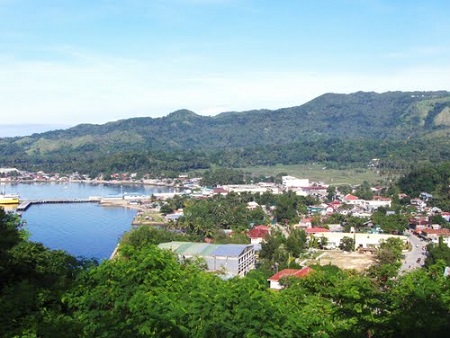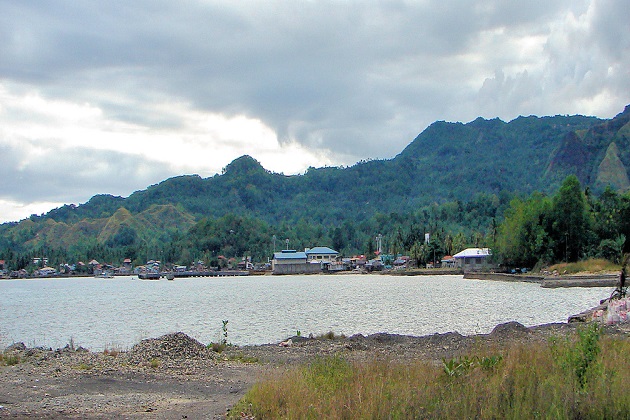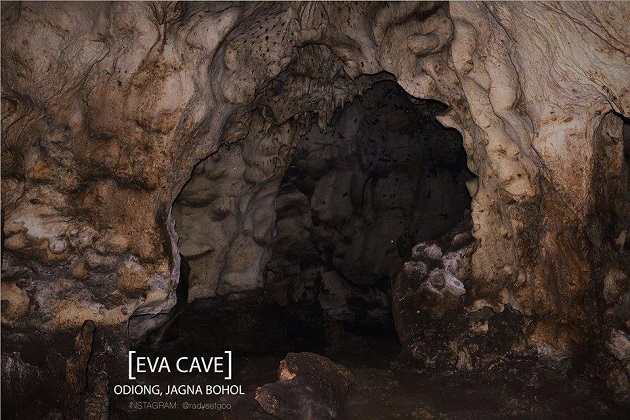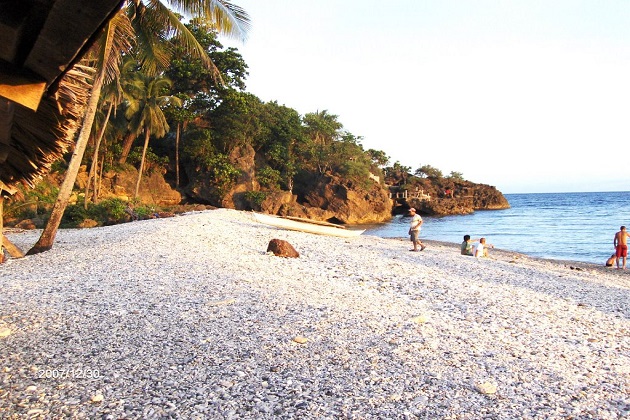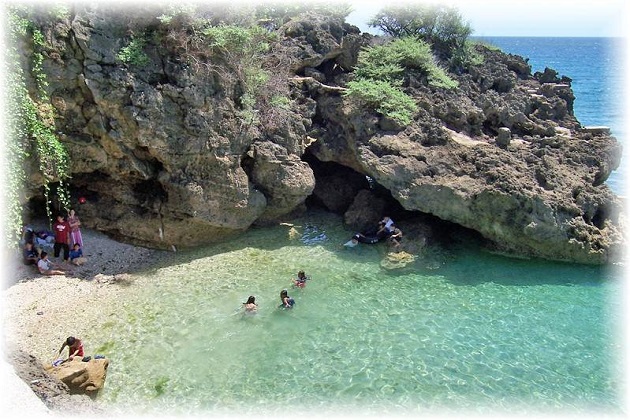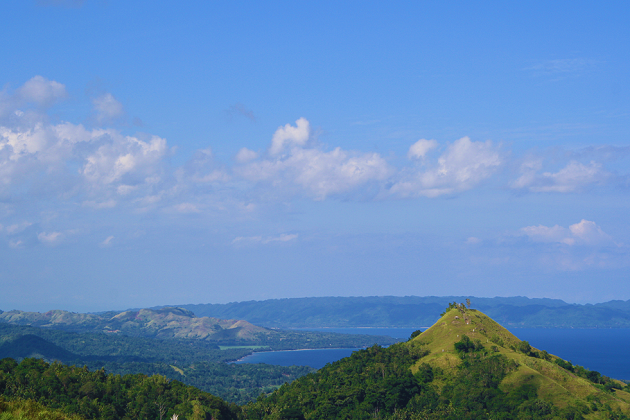⭐ BEST FERRY via CEBU & Countryside Tour: Our pick for Ferry Tickets and Countryside Tours.
Discover the Charms of Jagna, Bohol: A Hidden Gem in the Philippines
Jagna boasts a rich history that dates back to the Spanish colonial era.
From the arrival of Miguel Lopez de Legaspi to the establishment of its first church and convent by the Jesuits, the town is steeped in captivating stories and historical landmarks.
Nature enthusiasts will be enchanted by Jagna's pristine beaches, captivating waterfalls, and lush rice terraces.
Dive into crystal-clear waters, explore hidden caves, or marvel at the scenic beauty of the landscape.
For a taste of Jagna's vibrant culture, immerse yourself in its colorful festivals, showcasing lively dances, traditional rituals, and sumptuous delicacies.
Indulge in Jagna's local cuisine, from the famous calamay to mouthwatering seafood dishes.
The warmth and hospitality of the locals will make your stay even more memorable.
Embark on an unforgettable journey and discover the hidden charms of Jagna, Bohol. Start planning your adventure today!
Contents
- Discover The Rich Cultural Heritage Of Jagna, Bohol!
- Discover The Enchanting Wonders Of Jagna, Bohol!
- Attractions Of Jagna Town
- Explore The Vibrant Underwater World Of Jagna's Coastal Paradise!
- Experience The Vibrant Festivals Of Jagna, Filled With Cultural Splendor!
- Delight In The Flavors Of Jagna's Delectable Delicacies!
- The History Of Jagna
- Where To Stay
- Getting There And Around
Discover the Rich Cultural Heritage of Jagna, Bohol!
1. The Church of St. Michael the Archangel:
Explore the grandeur of the town's massive Catholic Church, dedicated to St. Michael the Archangel. Built with the sweat and labor of its forebears, this centuries-old church stands as a testament to Jagna's spiritual strength and devotion. Admire the church's impressive architecture and experience the vibrant religious activities that take place here, including processions, Mass offerings, and festive celebrations during the feast day of St. Michael on September 29th.
2. Birhen Sa Barangay Shrine:
Pay homage to the Blessed Virgin Mary at the Birhen Sa Barangay Shrine. Located near the municipal building, this shrine is a protected municipal park and has been declared a national shrine by the local diocese. Marvel at the miraculous image of the Blessed Virgin, depicted in native Filipino attire, carrying the baby Jesus and a rosary. Experience the reverence and devotion of many devotees who travel from far and wide to venerate this sacred image.
[ Bohol Sight Seeing Day Trips - Check Out Availability ]
[ Full Day Cruise and Sailing Tours - Check out Availability ]
[ Full Day Adventure Tours - Check out Availability ]
3. Ilihan Shrine:
Embark on a pilgrimage to the Ilihan Shrine, perched atop Ilihan Hill, just half a kilometer from the town. Take the winding road to reach the shrine, where a chapel is dedicated to the Barangay Sang Birhen. From this vantage point, enjoy panoramic views of the Sea of Mindanao, the beautiful coastline, and the surrounding hills of neighboring towns. Experience the spiritual significance of this site, which has been visited by faithful pilgrims since 1979.
4. Lonoy Martyr Site:
Honor the memory of the brave guerrilla soldiers at the Lonoy Martyr Site. This site commemorates the 406 soldiers, led by Capt. Gregorio "Goyo" Caseñas, who lost their lives during the Philippine-American War. These Filipino soldiers were tragically caught off guard and ambushed by American forces, resulting in a devastating loss. The Lonoy, Jagna Massacre serves as a poignant reminder of the horrors of war and the sacrifices made in the name of honor and country.
As you explore the cultural landmarks of Jagna, you'll witness the deep-rooted faith and resilience of its people. These sites not only showcase the town's rich history but also serve as reminders of the value of freedom and the ongoing struggle against oppression. Let Jagna's cultural treasures and religious sites leave a lasting impression as you delve into the heart of this vibrant town in Bohol, Philippines.
Ready to explore the beautiful islands of Cebu and Bohol? Secure your ferry tickets today through 12go and start your unforgettable journey!
Discover the Enchanting Wonders of Jagna, Bohol!
1. Eva Cave:
Journey into the mystical Eva Cave located in Barangay Odiong. Witness the captivating interior of the cave, which was expanded after a high magnitude earthquake. Marvel at the compartments within the cave and encounter a knee-deep, refreshing body of water. Keep an eye out for the diverse bird species and the edible nests of the birds that call this cave home.
2. Cantuyoc Cave:
Explore the mesmerizing Cantuyoc Cave in Barangay Cantuyoc. This cave holds the distinction of being the Philippines' second deepest cave. Venture through its chambers, shaped by underground rivers, and witness the awe-inspiring wonders hidden within.
3. Luinab Rice Terraces:
Immerse yourself in the scenic beauty of the Luinab Rice Terraces. Marvel at the picturesque landscape created by these terraces, which cascade down from the mountaintops. Experience the verdant beauty of the terraces, especially after the planting season when the fields are covered in lush green shoots.
4. Kinahugan Falls:
Prepare to be enchanted by the breathtaking Kinahugan Falls, featuring three stunning falls. Admire the water cascading over a 50-foot cliff, surrounded by lush greenery and tropical trees. Take a refreshing dip in the deep basin created by the falls and soak in the natural beauty of this tranquil oasis.
5. Boctol Waterfall:
Discover the captivating Boctol Waterfall in Barangay Boctol. Witness the mesmerizing sight of water cascading down a steep cliff into a pristine basin. The natural pool reflects the blue sky above, creating a serene atmosphere. Marvel at the unique cave-like aperture near the falls, adding an extra touch of intrigue to this natural wonder.
6. Can-uba Beach:
Indulge in the beauty of Can-uba Beach, stretching along the coastline for about 400 meters. Enjoy the crystal-clear and refreshing waters that remain deep, regardless of tides. Relax on the fine sandy beach and soak up the sun while surrounded by the stunning scenery of towering cliffs. Join the locals and visitors as they gather for picnics and enjoy the cool and clean waters of this beach paradise.
7. Mayana:
Take a trip to the charming Barangay of Mayana, located 17 kilometers from the town proper. Experience the cool climate and explore the vibrant fields of fresh cut flowers. Marvel at the sight of terraced rice paddies, a common feature in this area.
As you explore Jagna, let the beauty of its natural landscapes and cultural treasures captivate your heart, leaving you with unforgettable memories of this remarkable destination in Bohol, Philippines.
Attractions of Jagna Town
Jagna is a charming town located on the southeastern coast of Bohol in the Philippines. Here are some notable attractions and things to see in Jagna:
Jagna Fish Port:
As a coastal town, Jagna is known for its bustling fish port. Visiting the fish port allows you to witness the local fishing industry in action. You can observe fishermen unloading their catch, local vendors selling fresh seafood, and the vibrant atmosphere of a working port.
While not directly in Jagna, Can-Umantad Falls is a natural attraction located nearby in the town of Candijay. It's worth the trip as it is one of Bohol's most stunning waterfalls. With multiple cascades and a picturesque surrounding, Can-Umantad Falls offers a refreshing retreat amidst nature.
Jagna Municipal Hall and Town Plaza:
The Jagna Municipal Hall is an impressive colonial-era building situated in the town plaza. The building's architecture reflects the town's historical significance. The town plaza itself is a lovely spot to relax, observe the local life, and take in the ambiance of Jagna.
Jagna Public Market:
A visit to the Jagna Public Market allows you to immerse yourself in the local culture. You can explore the market's vibrant stalls offering a variety of fresh produce, seafood, local delicacies, and handicrafts. It's an excellent place to experience the local flavors and interact with the friendly locals.
Explore the Vibrant Underwater World of Jagna's Coastal Paradise!
Jagna, nestled along the Mindanao Sea, boasts a thriving marine ecosystem teeming with life. The fusion of sea nutrients carried by Mindanao Sea currents, originating from the China Sea and the Pacific Ocean, nourishes the vibrant corals and supports a diverse array of fish species. Immerse yourself in the wonders beneath the waves and discover Jagna's hidden underwater treasures.
1. Sting Rays and Delicacies:
During the summer months, the waters of Jagna become a haven for sting rays, locally known as "sanga." These seasonal delicacies are savored raw and dried or cooked with flavorful coconut milk and spices, offering a delectable taste of the sea. The sting ray holds special significance as the municipal fish of Jagna, representing the town's rich maritime heritage.
2. Double Barrier Reef:
Under the jurisdiction of Jagna, a double barrier reef lies just off its shores. Designated as a protected zone, this remarkable reef is marked by buoys, safeguarding its delicate coral formations. Fishing and anchoring are strictly prohibited to preserve the pristine environment. Local fishermen, too, are barred from approaching the reef. Such conservation efforts ensure the longevity of the corals and the sustained abundance of marine life.
3. Diving and Snorkeling Delights:
While Jagna's dive sites remain a hidden gem for many, they are beloved by local divers and snorkelers. Along the picturesque coastlines, adorned with fine sand, rugged cliffs, and swaying coconut palm trees, you'll find opportunities for thrilling underwater exploration. From Larapan to Nausok Point, discover hard corals and encounter a variety of tropical fish species. Venture further into the depths of the Mindanao Sea, where hammerhead sharks and other fascinating marine creatures make their home. Nausok Point to Pangdan, Canupao Point, and Cantagay Point offer ideal conditions for snorkeling and beach-entry scuba diving. Admire the colorful spiny and table corals, along with vibrant soft corals and graceful sea anemones. Dive among the myriad of coral fish darting in and out of their coral homes, showcasing a kaleidoscope of vibrant colors. Keep an eye out for sea snakes, particularly at Nausok Point, adding an extra element of excitement to your underwater adventure.
4. Coastal Beauty and Serenity:
The Jagna Sea beckons visitors with its crystal-clear, refreshing waters and captivating blue hues. During the summer seasons, the shoreline becomes a magnet for beach enthusiasts seeking solace and relaxation. Immerse yourself in the natural beauty of the beaches, where fine sand meets rugged cliffs, and driftwood and tropical debris naturally wash ashore. On a clear sunny day, enjoy breathtaking views of Camiguen Island, adorned by the majestic peak of Mt. Hibok-Hibok.
Indulge your sense of adventure and curiosity as you explore Jagna's coastal paradise. Dive into the azure depths, snorkel along vibrant reefs, and bask in the serenity of its stunning shores. Jagna's marine wonders await, offering a mesmerizing journey into the heart of Bohol's underwater splendor.
Experience the Vibrant Festivals of Jagna, Filled with Cultural Splendor!
Celebrate the Splendor of Jagna's Vibrant Festivals in Honor of St. Michael the Archangel!
Every year on September 29th, Jagna town bursts into a lively celebration, commemorating the Jagna Feast Day of St. Michael the Archangel. With a reputation for miraculous interventions and unwavering support during both joyful and challenging times, St. Michael has earned the utmost love and veneration from the Jagnaanons.
Immerse yourself in the mesmerizing festivities that showcase Jagna's cultural richness and religious devotion. These vibrant festivals pay tribute to their beloved patron saint, bringing the community together in a magnificent display of faith and heritage.
At the forefront is the Pandayan Festival, held in honor of St. Joseph the Worker, the patron of the parish in barangay Lonoy. This grand celebration marks the canonical erection and parochial anniversary of St. Joseph the Worker Parish. Witness the vibrant nine-day novena, the captivating procession featuring the image of St. Joseph, and explore the Carpentry and Handicrafts Fair. Feel the energy as barangays compete in an exhilarating inter-barangay basketball tournament and marvel at the colorful street dancing competition.
Another captivating event is the Sinu-Og Estokada, a modified rendition of the native sinu-og war dance. Symbolizing the eternal battle between good and evil, this dance captivates the audience with its rhythmic movements and precise choreography. Marvel at the talent and passion of Jagna's young adolescents as they bring this traditional dance to life.
Jagna's festivals are a testament to the town's deep-rooted cultural heritage and unwavering faith. Join the locals in these joyous celebrations, witness the enchanting dances, and partake in the age-old rituals that embody the spirit of Jagna. Experience the unity, pride, and reverence that permeate the air during these extraordinary festivals.
Indulge in the vibrant traditions and immerse yourself in the awe-inspiring celebrations of Jagna, where the love for St. Michael the Archangel is celebrated with unmatched fervor. Embrace the infectious joy, the resounding music, and the rich cultural tapestry that make Jagna's festivals an unforgettable experience.
Delight in the Flavors of Jagna's Delectable Delicacies!
Jagna, known for its culinary treasures, offers a wide array of mouthwatering delicacies that will satisfy even the most discerning palates. Let your taste buds embark on a journey as we explore some of the town's signature dishes, starting with the beloved Calamay.
1. Calamay:
Calamay is a sweet sticky rice dessert made from glutinous rice, coconut milk, and brown sugar. This luscious treat is cooked slowly over low heat until it reaches a thick and creamy consistency. It is typically served in small bite-sized portions and often enjoyed during special occasions or as a delightful snack. The combination of the rich coconut flavor and the smooth texture of the rice makes Calamay an irresistible indulgence.
2. Kinilaw:
Kinilaw is a traditional Filipino dish that features fresh seafood marinated in vinegar or citrus juice, such as calamansi or lime. In Jagna, where abundant marine resources thrive, Kinilaw is a popular choice for seafood enthusiasts. The raw seafood, which can include fish, shrimp, or squid, is mixed with onions, ginger, chili peppers, and other seasonings to create a refreshing and tangy flavor profile. The dish is typically served chilled and makes for a perfect appetizer or main course.
3. Budbud Kabog:
Budbud Kabog is a native delicacy made from millet seeds, locally known as "kabog," wrapped in banana leaves and steamed to perfection. This unique delicacy has a distinct nutty flavor and a soft, chewy texture. It is often enjoyed with a cup of hot chocolate or paired with ripe mangoes. Budbud Kabog is not only a delightful treat but also a testament to Jagna's agricultural heritage.
4. Binagol:
Binagol is a sweet dessert that originated from Eastern Visayas but has gained popularity in Jagna. It is made from grated taro root mixed with coconut milk, sugar, and other flavorings. The mixture is then wrapped in banana leaves and steamed until it becomes a delectable sticky pudding. Binagol is often shaped like a pyramid and topped with a slice of salted egg for an added savory element. This indulgent dessert showcases the unique flavors and ingredients of the region.
5. Linubid:
Linubid is a traditional Jagna delicacy made from glutinous rice cooked in coconut milk and sweetened with sugar. The rice mixture is then wrapped in banana leaves and steamed until it becomes a soft and fragrant dessert. Linubid is enjoyed for its comforting taste and texture, making it a popular choice during special occasions or simply as a delightful snack.
These are just a few examples of the culinary treasures that await you in Jagna. From the delightful sweetness of Calamay to the refreshing tang of Kinilaw, each delicacy reflects the rich cultural heritage and flavors of this vibrant town. So, indulge your senses and savor the unique tastes that Jagna has to offer.
The History of Jagna
Jagna's history dates back to the arrival of Miguel Lopez de Legaspi on its shores in March 15, 1565, when his flagship "San Pedro" underwent repairs along Jagna Bay. The Jesuits started their work in San Miguel de Hagna as early as 1596, with the Jesuit priest Jose Sanchez founding the parish and town on September 29, 1631. The town took Saint Michael the Archangel as its patron saint.
The first church and convent were constructed by Fr. Sanchez through forced labor, but unfortunately, they were damaged by a fire in 1808. After the Jesuits left Bohol in 1768, the Recollects assumed responsibility for the town.
In 1886, records indicate the existence of a church with a nipa roof, measuring 125 yards long, 25 yards wide, and 16 yards tall, including the moldings. A substantial convent was also completed in 1878.
The initial immigrants to Jagna were natives from Loboc and Talibon who were en route to Mindanao aboard their sailboats called "bilos." However, due to inclement weather, they were forced to land near Jagna. Captivated by the richness and allure of the land, they decided to settle and establish a village. Through their hard work and dedication, they transformed the land into productive rice paddies, contributing to the agricultural heritage of Jagna.
Over the years, Jagna has grown and flourished, witnessing the resilience and determination of its people. Today, the town stands as a testament to its vibrant history and the spirit of its early settlers who shaped it into the thriving community it is today.
Where Jagna Derives Its Name
The origin of the name "Jagna" is intertwined with local folklore and natural phenomena. According to the tale, the name "Jagna" stemmed from the vernacular exclamation "ni hagna na," which refers to the stage when boiling oil is almost done.
The name is also connected to a river abundant with a species of fish known as "tigue" in the local dialect. As the fish swam near the surface of the water, their scales reflected the sunlight, creating a sparkling effect that resembled coconut oil boiling in a frying pan. Whenever people witnessed the shimmering surface caused by the fish, they would exclaim "ni hagna na."
Over time, the expression gradually transformed into the present name "Jagna." Although the river mentioned in the tale has since dried up, remnants of its existence remain. At the mouth of the river, there is a significant hole or cave-in, leading the early inhabitants of Jagna to refer to the river as the "Boho River."
The etymology of Jagna is not only a reflection of the town's linguistic evolution but also highlights the cultural significance of the natural environment and the stories that have been passed down through generations.
where to stay
Jagna, located on the scenic island of Bohol, offers a variety of accommodation options to suit every traveler's needs. Whether you're seeking a luxurious beachfront resort, a cozy guesthouse, or a budget-friendly inn, Jagna has something for everyone. Here are some of the best places to stay in Jagna:
1. Beachfront Resorts: Experience paradise by staying in one of the beachfront resorts in Jagna. Enjoy stunning ocean views, private beaches, and a range of amenities such as swimming pools, spa services, and on-site restaurants. Indulge in relaxation and tranquility while immersing yourself in the natural beauty of the surroundings.
2. Guesthouses and Bed and Breakfasts: For a more intimate and personalized experience, consider staying in a guesthouse or bed and breakfast. These accommodations offer cozy rooms, warm hospitality, and a chance to connect with the local culture. Enjoy home-cooked meals, friendly conversations with hosts, and insider tips on the best places to visit in Jagna.
3. Inns and Budget-Friendly Options: Traveling on a budget? Jagna has affordable inns and budget-friendly options that provide comfortable rooms and essential amenities at reasonable rates. These accommodations are perfect for backpackers and budget-conscious travelers who want to explore Jagna without breaking the bank.
4. Homestays: Immerse yourself in the local way of life by staying in a homestay. Experience authentic Filipino hospitality, live with a local family, and gain insights into the customs and traditions of Jagna. This is a great option for those seeking a cultural exchange and a deeper understanding of the community.
When planning your trip to Jagna, consider your preferences and budget to choose the accommodation that suits you best. Book in advance to secure your desired place to stay and make the most of your visit to this charming town in Bohol.
getting there and around
Getting to Jagna and navigating within the town is relatively easy.
It's always a good idea to plan your transportation ahead of time and confirm schedules, especially for ferry trips or long-distance bus journeys. Additionally, consider checking with local transportation providers for any updates or changes in schedules.
Here's a guide on how to get there and get around:
Jagna Sea Port
Experience the convenience and accessibility provided by the Jagna Sea Port as you embark on your island hopping adventures, inter-island travels, or explore the beautiful town of Jagna. Enjoy a seamless journey and discover the stunning wonders of Bohol and its neighboring islands.
1. Island Hopping Hub:
The Jagna Sea Port in Bohol serves as a convenient starting point for exciting island hopping adventures. From here, you can embark on boat trips to explore nearby islands, including the picturesque Camiguin. Enjoy the scenic beauty of the sea and discover the diverse marine life as you hop from one island to another.
2. Inter-Island Transport Hub:
The Jagna Sea Port is a vital transportation hub, connecting Bohol to various destinations in Mindanao. Regular ferry services operate from Jagna, providing a convenient and reliable mode of transportation for travelers wishing to explore the wonders of Mindanao. Whether you're heading to Butuan, Nasipit, or Cagayan de Oro, the port offers a seamless connection to your desired destination.
3. Point of Entry:
If you're planning to visit Jagna and surrounding areas from Camiguin or Mindanao, the Jagna Sea Port serves as a convenient point of entry. Large outrigger boats and ferries operate regular trips between Jagna and Camiguin, allowing for easy access and hassle-free travel. From Mindanao, particularly from Butuan, Nasipit, and Cagayan de Oro, you can conveniently reach Jagna through the port.
By Sea:
Jagna has its own seaport, making it accessible by ferry or passenger boat. You can catch a ferry from Cebu City to Jagna, with several trips available throughout the day. The ferry journey takes approximately 2 to 3 hours. Once you arrive at Jagna Port, you can easily reach the town center by tricycle or multicab.
By Land:
If you're traveling from other parts of Bohol, you can take a bus or van to Jagna. The bus terminal in Tagbilaran City offers regular trips to Jagna, and the journey usually takes around 2 hours. Vans are also available and provide a faster option for transportation.
Getting Around:
Jagna is a relatively small town, and getting around is convenient. Here are some transportation options within the town:
Tricycle:
Tricycles are a common mode of transportation in Jagna. These motorized three-wheeled vehicles can take you to various destinations within the town. Make sure to agree on the fare with the driver before your ride.
Walking:
Jagna is a walkable town, and exploring on foot allows you to experience its charm at a leisurely pace. Many attractions, markets, and establishments are within walking distance of each other.
Motorcycle Rentals:
If you prefer more independence in getting around, you can rent a motorcycle or scooter from local rental shops. This option allows you to explore the surrounding areas and nearby attractions at your own pace.
Source: elgu.ncc.gov.ph
Top of Jagna Town
Ready to explore the beautiful islands of Cebu and Bohol? Secure your ferry tickets today through 12go and start your unforgettable journey!
recommended hotel booking
Book your stay in Bohol's breathtaking surroundings through Agoda and experience the ultimate relaxation
Top 25 Sights and Attractions in Bohol
- Chocolate Hills
- Tarsier Conservation Sanctuary
- Panglao Island
- Loboc River Cruise
- Hinagdanan Cave
- Balicasag Island
- Alona Beach
- Bilar Man-made Forest
- Blood Compact Shrine
- Baclayon Church
- Bohol Bee Farm
- Anda Beach
- Sipatan Twin Hanging Bridge Loboc
- Danao Adventure Park
- Sagbayan Peak
- Butterfly Conservation Center
- Clarin Ancestral House
- Dimiao Twin Falls
- Mag-Aso Falls
- Anda White Beach
- Lamanok Island
- Rajah Sikatuna Protected Landscape
- Dauis Church
- Can-umantad Falls
- Punta Cruz Watchtower
All Rights Reserved ©2024. Bohol Philippines Travel Guide
Address: Talibon, Bohol, Philippines
